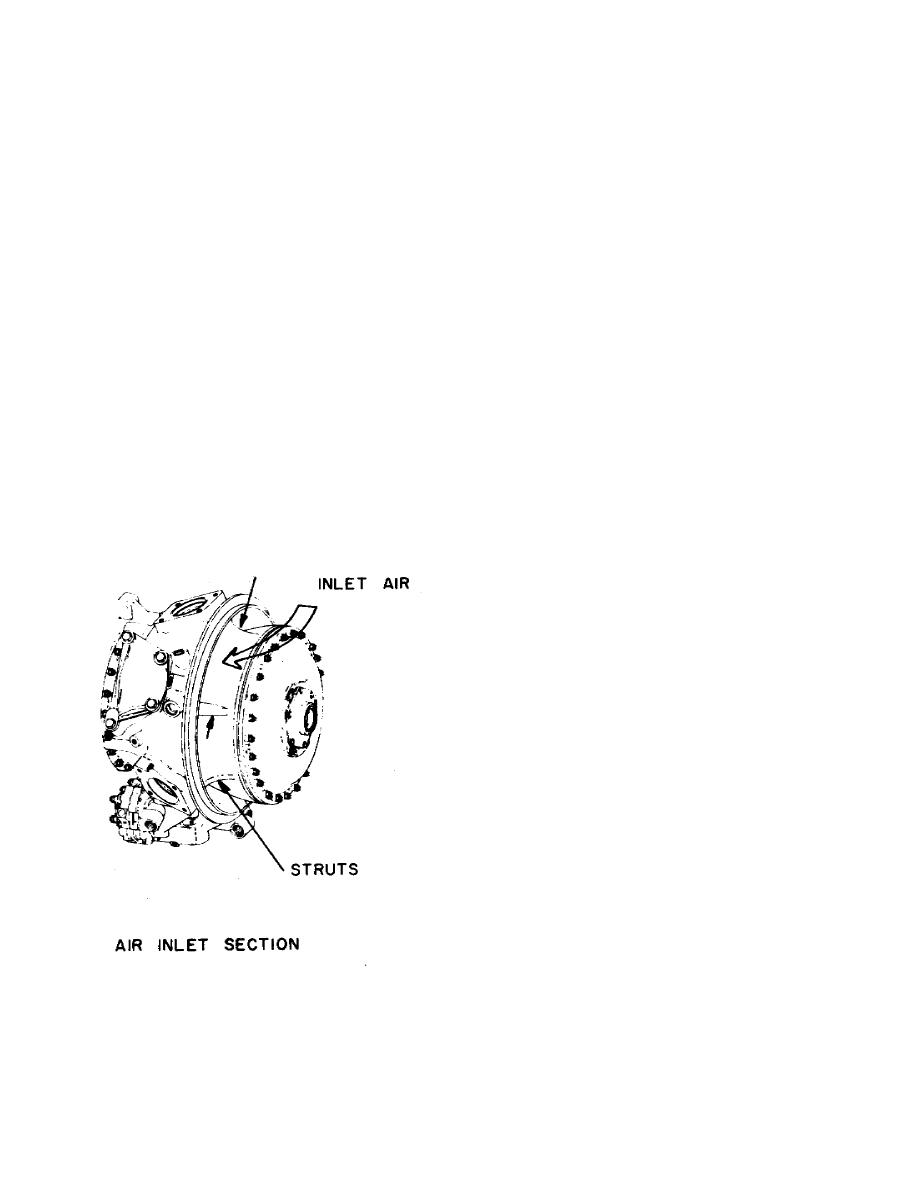
AVCO) and the 13 is referred to as the "dash number." These are
also always odd numbers, if the engine was developed for the Air
Force/Army. The dash number designates the particular version of
this model engine. When a production model is improved by major
modifications, the dash number is changed.
In the past the Army has been getting their engines through
the Air Force, using Air Force designators. However, now the Army
has its own series of number designators. The first engine procured
under the new system was the T700GE700 engine. The next engine
developed for the Army will be the T701manufacturer's codethree
digit dash number. The engines that were in the Army inventory
previous to this new designator system will keep their present
designators. However, when these models are improved, they will get
the new threedigit number for a dash number. For example the
improved version of the T53L15 is the T53L701.
1.18.
AIR INLET SECTION
The amount of air required by a gas turbine engine is
approximately ten times that of a reciprocating engine. The air
inlet is generally a large, smooth aluminum or magnesium duct which
must be designed to conduct the air into the compressor with minimum
turbulence and restriction. The air inlet section may have a variety
of names according to the desire of the manufacturer. It may be
called the front frame and accessory section, the air inlet assembly,
the front bearing support and shroud assembly, or any other term
descriptive of its function. Usually, the outer shell of the front
frame is joined to the center portion by braces that are often called
struts. The antiicing system directs compressor discharge air into
these struts. The temperature of this air prevents the formation of
ice that might prove damaging to the engine. Antiicing systems are
discussed further in the chapter covering the engines they may be
installed on. Figure 1.11 illustrates the variety of inlet duct
designs of Army aircraft.
25


 Previous Page
Previous Page
